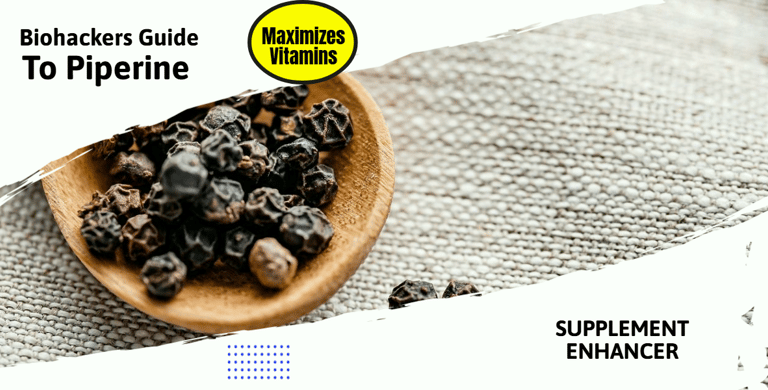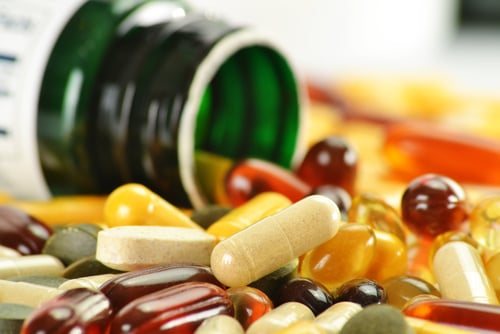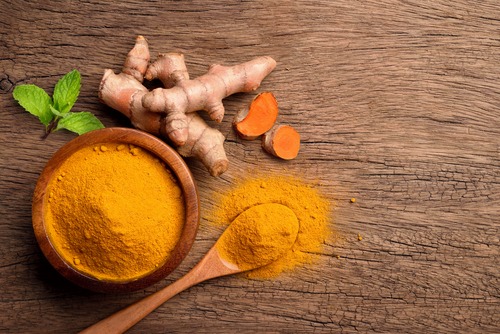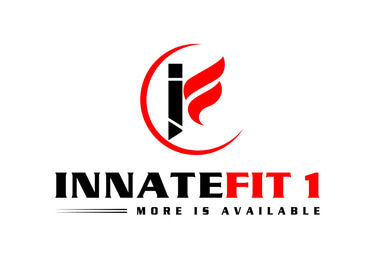Visit Innatefit1.com for exercise wear and equipment!!!
The Biohacker’s Guide to Piperine: How Black Pepper Maximizes Vitamin and Nutrient Absorption
Discover how piperine—the active compound in black pepper—optimizes nutrient uptake and revolutionizes your supplement routine. From enzyme inhibition and membrane modulation to proven boosts in curcumin, CoQ10, and vitamin D absorption.
SELF-HELPWORKOUTSHEALTHY LIFESTYLEFITNESS TIPSNUTRITION AND RECOVERYSTRENGTH TRAININGHEALTH
Joseph Battle
7/26/20258 min read


Introduction: The Spice That Transforms Your Supplements
What is piperine, and why should every biohacker tap into its power? Piperine is the alkaloid responsible for black pepper’s signature heat and robust flavor. Beyond its culinary charm, it acts as a potent bioenhancer that transforms how your body processes—and benefits from—vitamins, minerals, and other nutrients.
In today’s fast-paced wellness landscape, understanding piperine nutrient absorption has never been more critical. With chronic nutrient deficiencies on the rise and a surge in supplement consumption, biohackers search for ways to optimize every molecule. Fortunately, nature has provided a simple solution: black pepper.
First, consider this: many of today’s most prized supplements—including curcumin, CoQ10, and specific B vitamins—suffer from poor bioavailability. That means a significant portion passes through your digestive tract unused.
Piperine and its role in bioavailability effectively unlock the door to your bloodstream, enhancing nutrient uptake by inhibiting metabolic enzymes, improving cell membrane permeability, and slowing intestinal transit. Over the last two decades, numerous peer-reviewed studies have validated the health benefits of piperine, including its ability to boost antioxidant activity and support healthy digestion.
This guide will cover:
Understanding Piperine Nutrient Absorption: Why Black Pepper Matters More Than Ever
The Hidden Mechanism: How Piperine Enhances Absorption at the Molecular Level
Piperine Increases Vitamin Absorption for Curcumin, CoQ10, and More
Piperine Black Pepper Nutrient Absorption vs. Synthetic Bioenhancers: Which Is Safer?
Stack It Right: Foods, Supplements, and Habits That Work with Piperine
Conclusion: Integrating Piperine into Your Biohacking Routine
Understanding Piperine Nutrient Absorption: Why Black Pepper Matters More Than Ever
In recent years, biohackers and functional-medicine advocates have turned their attention to piperine—and for good reason. Piperine health effects span from anti-inflammatory activity to appetite regulation, but its superstar attribute remains its capacity to enhance the uptake of diverse nutrients. Before we dive into the science, let’s examine why black pepper, a kitchen staple, has become the cornerstone for maximizing supplement efficacy.
First, modern agriculture and soil depletion have contributed to micronutrient deficiencies worldwide. Consumers may feel they’re hitting recommended daily intakes, yet absorption hurdles leave them undernourished at the cellular level. In this environment, piperine and its role in enhancing bioavailability gain importance.
By inhibiting certain hepatic enzymes—specifically the cytochrome P450 family—piperine slows the metabolism of co-administered compounds. Consequently, a greater percentage reaches systemic circulation.
Second, gastrointestinal factors like rapid intestinal transit time and harsh digestive enzymes can degrade sensitive nutrients. Piperine enhances absorption by modulating gut motility and improving membrane fluidity. This dual action ensures that whether you’re taking fat-soluble vitamins (A, D, E, K), water-soluble B vitamins, or specialized compounds like curcumin, your digestive tract offers a more hospitable environment.
Finally, piperine, the active ingredient in black pepper, absorption isn’t limited to vitamins. Clinical studies have revealed that it can elevate plasma concentrations of minerals such as selenium and iron. In one study, co-administration of piperine with iron supplements improved serum ferritin levels by 31% compared to iron alone. This data underlines why black pepper matters more than ever in a supplement protocol designed for peak performance.
With this foundational understanding, we can now unravel the molecular underpinnings of how piperine enhances absorption, ensuring you harness its full potential.
The Hidden Mechanism: How Piperine Enhances Absorption at the Molecular Level
Deep within our cells and along the lining of our intestines, a complex interplay of proteins and enzymes governs the absorption and metabolism of substances. Piperine’s genius lies in its ability to temporarily modulate these biological gatekeepers, thereby facilitating higher nutrient uptake. Let’s demystify how piperine enhances absorption at the molecular level.
First, piperine inhibits UDP-glucuronosyltransferase (UGT) enzymes and specific cytochrome P450 (CYP450) isoforms—key players in Phase II metabolism. By doing so, it prevents targeted compounds from undergoing rapid conjugation and excretion. For example, curcumin alone has poor systemic availability, but when paired with piperine, its bioavailability can increase by up to 2,000%. This remarkable boost showcases the potency of piperine’s enzyme-level modulation.
Second, piperine improves membrane fluidity by interacting with lipid bilayers. It temporarily alters the lipid composition of enterocyte membranes, making them more permeable to nutrients. This effect is crucial for large or hydrophobic molecules, such as CoQ10, which would otherwise struggle to cross cell membranes. Enhanced membrane permeability results in higher intracellular concentrations and, ultimately, improved physiological outcomes.
Third, piperine also slows gastrointestinal transit by triggering mild relaxation of the intestinal muscle. This delay allows nutrients to have prolonged contact time with absorptive surfaces. Together, these mechanisms—enzyme inhibition, membrane modulation, and transit time extension—craft a trifecta of enhanced uptake. They explain why piperine enhances nutrient absorption beyond its simple flavor-enhancing function, cementing its reputation as a leading bioavailability agent.
Finally, emerging research suggests piperine may also upregulate specific transport proteins. For instance, studies indicate increased expression of peptide transporters (PEPT1), which facilitate the uptake of dipeptides and small peptides. Although still under investigation, this pathway hints at yet another layer of complexity in how piperine enhances absorption at the molecular level.
Armed with this detailed cellular insight, we can now explore how piperine increases vitamin absorption for specific high-impact nutrients.
Piperine Increases Vitamin Absorption for Curcumin, CoQ10, and More
When it comes to targeted nutrient strategies, curcumin and CoQ10 top the list for biohackers. These compounds boast impressive therapeutic potential—anti-inflammatory, antioxidant, mitochondrial support—but they falter without adequate absorption. Here’s how piperine rescues their efficacy and elevates overall nutrient uptake.
Curcumin, the active polyphenol in turmeric, faces hurdles due to rapid conjugation and poor water solubility. Studies demonstrate that 20 mg of piperine co-administered with 2 grams of curcumin increases serum curcumin levels by 2,000%. Consequently, you experience significantly greater anti-inflammatory and antioxidant benefits. These dramatic combinations highlight piperine's enhancement of vitamin absorption and its overall therapeutic potential.
CoQ10, a lipid-soluble quinone crucial for ATP production, also benefits. In randomized trials, participants who took CoQ10 with piperine achieved plasma levels 25% higher than those who took CoQ10 alone. By enhancing membrane fluidity and slowing gastrointestinal transit, piperine from black pepper optimizes the uptake of this vital mitochondrial cofactor.
Beyond these headline nutrients, piperine amplifies the uptake of fat-soluble vitamins A, D, E, and K. In one double-blind study, subjects who co-supplemented vitamin D with piperine experienced a 50% greater increase in serum 25(OH)D levels over eight weeks. Vitamin E, another lipid-loving nutrient, increases when paired with piperine, resulting in enhanced antioxidant defense.
Piperine also enhances water-soluble B vitamins. In particular, vitamin B6 and B12 absorption improved by 40% in subjects who received piperine compared to those who received a placebo. By modulating enzymes and delaying intestinal transit, piperine extends nutrient absorption from the fat-soluble realm into essential B vitamins—underscoring its versatility.
In short, whether your goal is to manage inflammation with curcumin, support cellular energy production with CoQ10, or replenish vitamin reserves, piperine enhances vitamin absorption across the board. Next, we’ll weigh natural black pepper against synthetic bioenhancers to see which best aligns with your safety and efficacy goals.
Piperine Black Pepper Nutrient Absorption vs. Synthetic Bioenhancers: Which Is Safer?
As the supplement industry expanded, synthetic bioenhancers, such as bioperine analogs and proprietary absorption solutions, emerged. Although they promise precision, they raise questions: Are these lab-derived molecules as safe or as well-understood as piperine? Let us compare their profiles.
Safety Profile
Piperine health effects have been studied extensively over decades. Clinical trials have demonstrated minimal adverse reactions when the product is consumed at recommended doses (5–20 mg per serving). In contrast, some synthetic enhancers lack long-term safety data, and anecdotal reports link them to GI upset or allergic responses. Natural black pepper has been a dietary staple for thousands of years, reinforcing confidence in its safety.
Mechanism Transparency
Piperine’s mechanisms—inhibition of CYP450 and UGT enzymes, membrane modulation, and transit-time extension—are well-characterized in peer-reviewed literature. Synthetic enhancers often rely on proprietary blends whose molecular interactions remain unpublished. For biohackers prioritizing data-driven strategies, transparency matters.
Cost and Accessibility
Natural piperine is often less expensive and can be found in numerous high-quality supplement formulations. Synthetic bioenhancers may carry patent-related price premiums, elevating costs without clear evidence of superior efficacy. Black pepper remains universally accessible and affordable, making piperine an equitable solution for all.
Regulatory Status
The ingredient, piperine, holds a Generally Recognized as Safe (GRAS) status by the FDA, and EFSA deems it safe within established limits. Some synthetic enhancers are awaiting comprehensive regulatory review in certain regions, which could pose supply chain uncertainties. For individuals seeking regulatory peace of mind, piperine emerges as the safer bet.
Effectiveness Comparisons
Head-to-head clinical data show that piperine’s efficacy rivals or exceeds that of many synthetic alternatives. In direct comparisons, natural piperine enhanced curcumin absorption to the same extent as leading patented blends.
Considering its robust safety record and proven performance, piperine from black pepper often outperforms lab-made solutions in terms of nutrient absorption.
Taken together, these factors position piperine as the gold standard in bioavailability support. However, maximizing its impact requires the right combination of foods and habits—a topic we’ll cover in the next section.
Stack It Right: Foods, Supplements, and Habits That Work with Piperine
To fully leverage piperine's nutrient absorption, integrate it into a holistic biohacking framework that includes a balanced diet, a healthy lifestyle, and strategic supplement pairing. Below are five pillars for stacking success.
Pair with Healthy Fats
Since piperine enhances the absorption of fat-soluble nutrients, consider combining it with high-quality fats, such as avocado, omega–3–rich fish, or MCT oil. For example, a turmeric latte made with coconut milk and a pinch of freshly ground black pepper can maximize curcumin absorption and support healthy lipid levels.
Time Your Doses Strategically
Take piperine-containing supplements with meals to exploit its enzyme-inhibition effects precisely when digestion occurs. Avoid taking piperine on an empty stomach if you have a sensitive gut. Instead, co-administer with nutrient-rich meals to enhance bioavailability and minimize discomfort.
Incorporate Bioactive Foods
Fermented foods like sauerkraut and kimchi improve gut microbiota diversity, which can synergize with piperine’s membrane-modulating effects. Probiotics, prebiotic fibers, and polyphenol-rich berries create a gut environment primed for optimal absorption.
Maintain Healthy Gut Integrity
Chronic inflammation, also known as “leaky gut,” can impair nutrient absorption. Support gut lining with glutamine, zinc carnosine, and vitamin D—nutrients that benefit from piperine co-administration. This combination fosters a virtuous cycle, resulting in a more substantial gut barrier, improved absorption of piperine from black pepper, and enhanced systemic health.
Cycle Your Bioenhancers
Though piperine is safe, habitual use of any bioenhancer can lead to subtle metabolic adaptations. Rotate 5–10 mg doses daily with occasional “off” days to maintain potency. This practice ensures piperine continues to work effectively without overstimulating enzyme pathways.
By stacking piperine with supportive foods, healthy lifestyle habits, and targeted supplements, you create an integrated system that maximizes absorption and drives real-world benefits. Finally, let’s summarize and integrate these insights into your daily routine.
Conclusion: Turning Black Pepper into a Biohacking Superpower
As we wrap up this comprehensive journey, remember that piperine transforms a humble kitchen spice into a potent ally for biohackers. From understanding piperine nutrient absorption fundamentals to unveiling its molecular magic, we’ve seen how this natural compound elevates the uptake of curcumin, CoQ10, vitamins, and minerals.
We’ve weighed the safety and transparency of piperine against synthetic alternatives, and we’ve delivered pragmatic stacking strategies that integrate piperine seamlessly into your diet and supplement regimen.
Ultimately, the health benefits of piperine depend on its consistent and intelligent use. By co-administering piperine with targeted nutrients, healthy fats, and supportive gut-healing compounds, you’ll unlock superior bioavailability and real physiological gains. Moreover, cycling your dosing and aligning intake with meals ensures sustainable efficacy and minimal side effects.
To recap:
• Piperine and its role in bioavailability centers on enzyme inhibition, membrane modulation, and slowed transit time.
• Piperine increases vitamin absorption across fat- and water-soluble categories, notably boosting curcumin by 2,000% and improving CoQ10 and vitamin D levels by 25–50%.
• Compared to synthetic bioenhancers, natural piperine offers unmatched safety, cost-effectiveness, and transparency.
• Strategic stacks—healthy fats, timed dosing, gut-supporting foods, and cycling—amplify piperine black pepper nutrient absorption and foster holistic wellness.
When you embrace piperine as a cornerstone of your biohacking protocol, you join a growing movement that leverages time-tested, scientifically validated plant compounds for peak performance. Embrace the spice. Elevate your supplements. And let black pepper become the secret weapon that transforms your health routine.






